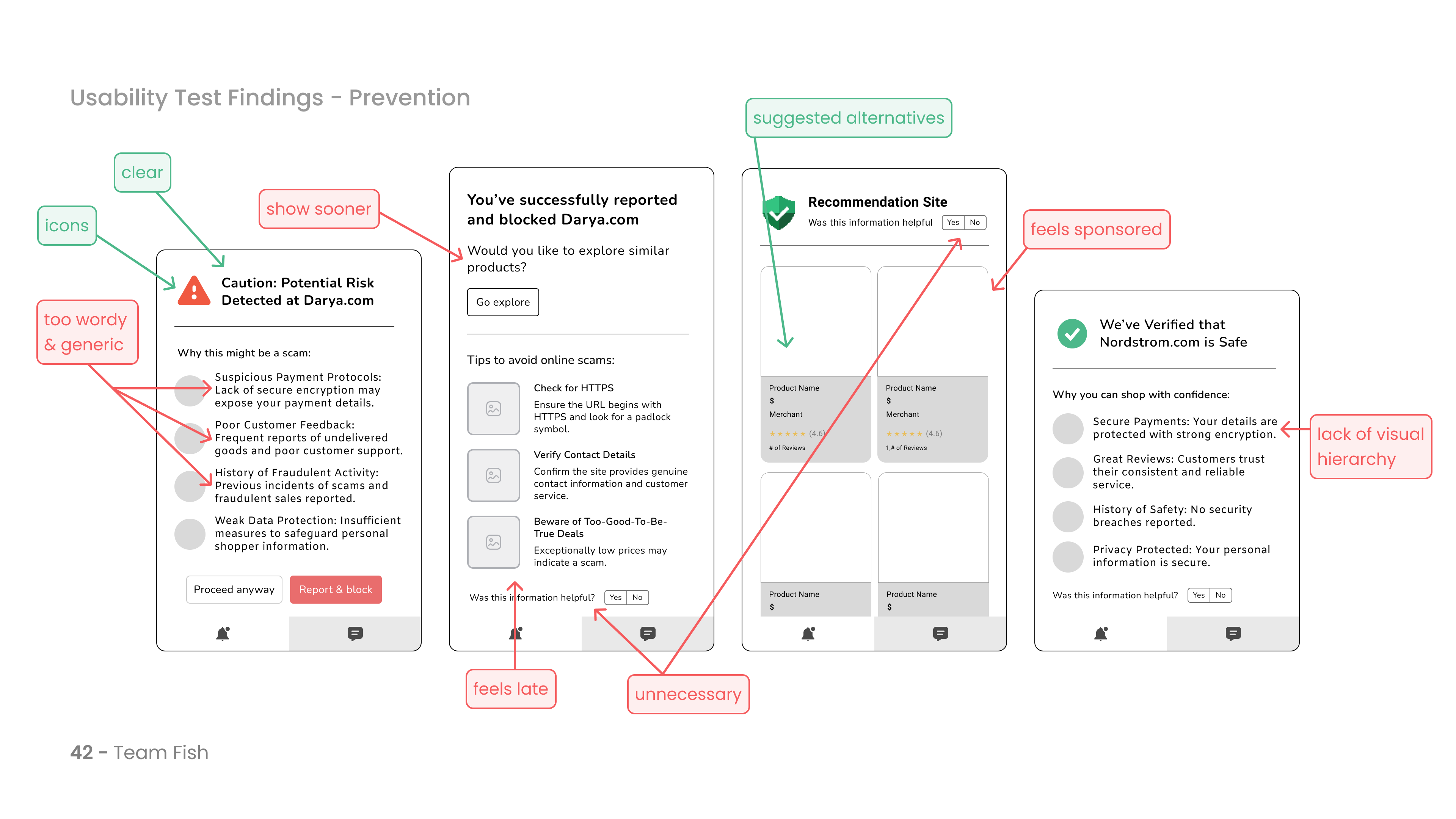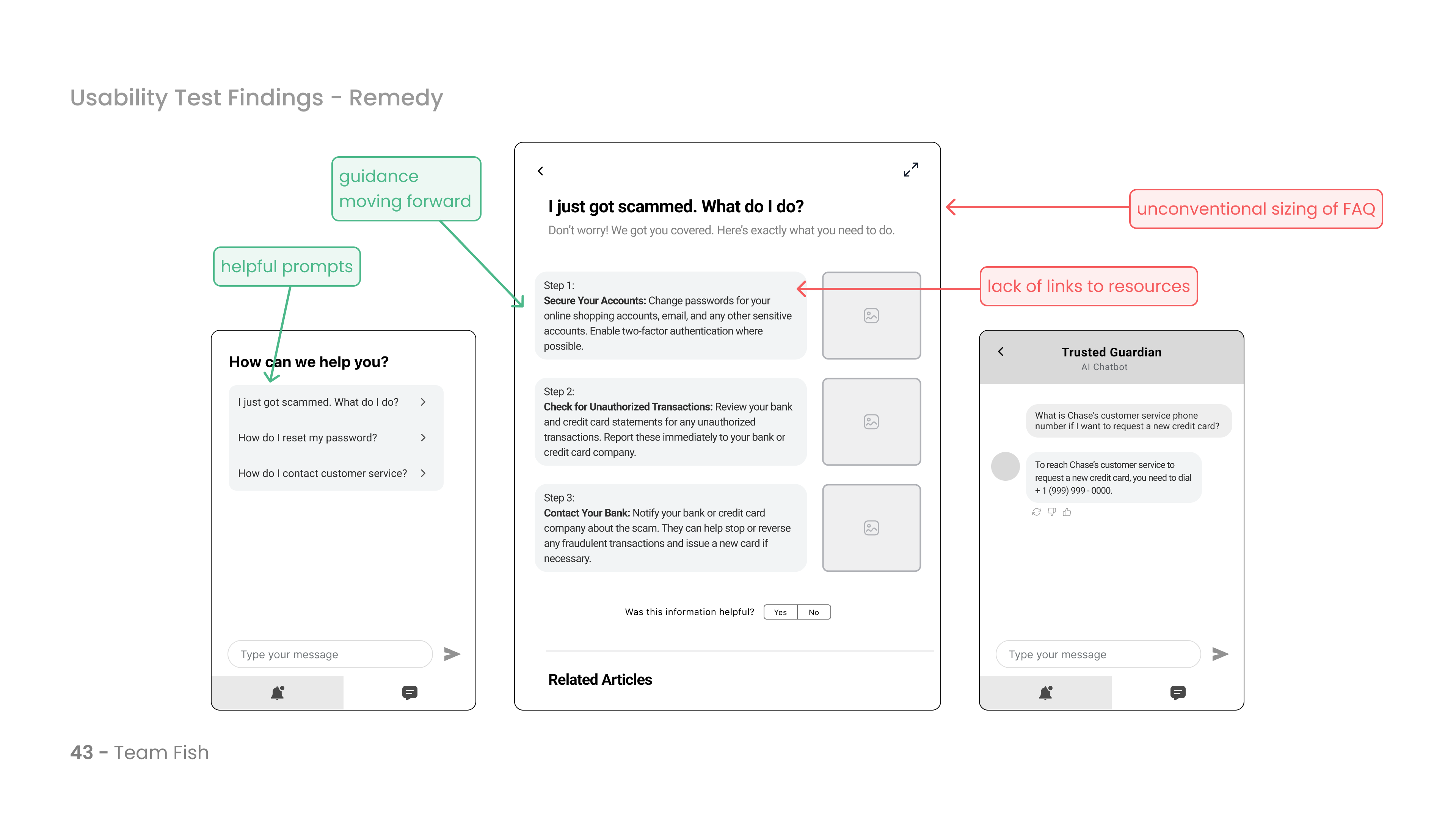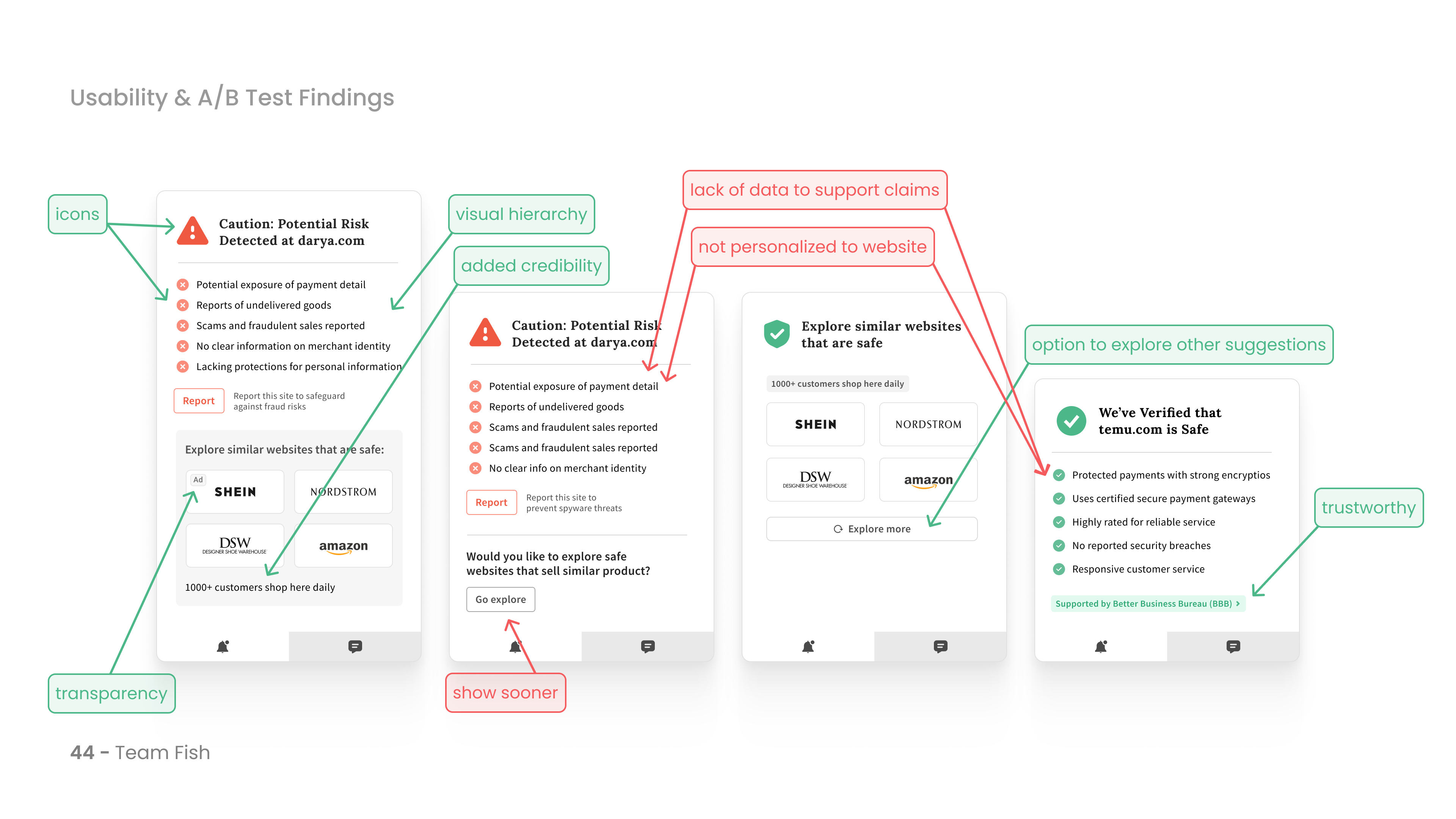Trusti
Reimagining The Online Shopping Experience
Introduction
Trusti is a browser extension concept designed to reshape online shopping into a secure, stress-free experience. By providing real-time scam alerts and personalized support, it empowers users to shop with confidence.
As lead UX designer, I crafted an experience that not only protects shoppers but turns safe awareness into a seamless part of their journey.
Procedure
Ideate Downselect
Personae
Customer Journey Mapping
Lean Canvas & Competitor Analysis
Theme The Experience
Prototype The Experience
Video
TIMELINE
Jan 2024 - Jun 2024
SCOPE
User Research, UX Design, UI Design
DELIVERABLES
User Research Process, Personae, Competitor Analysis,
Customer Journey Map, Hi-fi UI,
Experience Video
ROLE
Lead Product Designer
TEAM
Lead Product Designer
2 UX Designer
1 Project Manager
1 UX Researcher
IMPACT
The final prototype received a 4.7/5 usability rating, and 90% of
testers said they would install the extension to help avoid scams in
real life.
Notable Contribution
Affinity Mapping
Affinity mapped user interview findings to organize data, visualize connections between user experiences, and identify patterns and themes.
Brainstorming/Ideation
The ideation process was guided by revised design challenge statement and design principles to ensure our final intervention adequately addressed the needs of users.
Customer Journey Mapping
To understand and visualize the touchpoints of customers, we created a customer journey map that follows a customer's interactions from initial awareness to post-purchase reflection
High Fidelity Prototyping
I was responsible for creating the screens, visual language, and interactions for web screens.
PROBLEM SPACE
The U.S. is facing a senior care crisis. With more older adults than ever before, care services are stretched thin, leaving caregivers bogged down by unrelated tasks instead of spending time with residents.
RESEARCH
I employed a range of user research methods to gauge the scope of online shopping scams nationwide, understand the experiences of individuals who have fallen victim, and pinpoint the stakeholders working to address the same issue.
To truly understand our users, we immersed ourselves in their world:
How might we redesign the online shopping experience to allow consumers to feel safe and confident when making a purchase?
Primary Research Question
Competitive Analysis
User Persona


Customer Journey Map
Mapping the User Flow
Low-Mid Fidelity Wireframes




(Final) High fidelity prototype


Lean Canvas
Takeaways
Rooted in Experience, Not Features: Rather than concentrating on features alone, I centered the design around the user’s journey. This let me build an experience that fit naturally with their online shopping habits, meeting both functional and emotional needs and ensuring a safe, seamless path.
Consider the needs of stakeholders: Different age groups bring unique perspectives and challenges when using an online scam-prevention extension. Younger users may prioritize speed and convenience, favoring minimal alerts and clear visuals, while older adults might benefit from more detailed explanations, larger text, and step-by-step guidance. By designing flexible settings and accessible features that accommodate various levels of technical comfort, we ensure the extension supports and protects all users effectively.